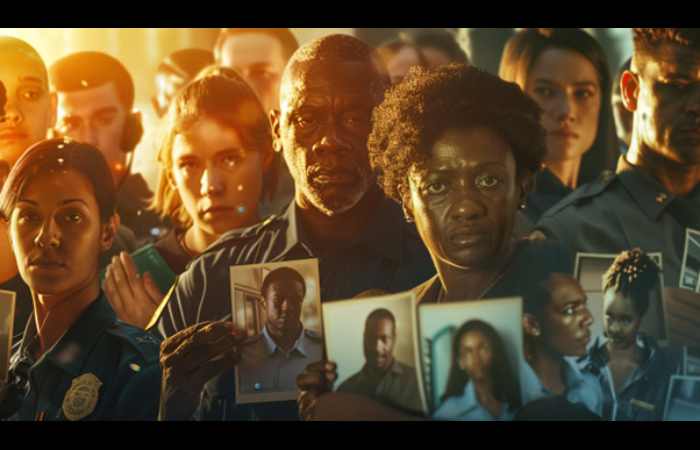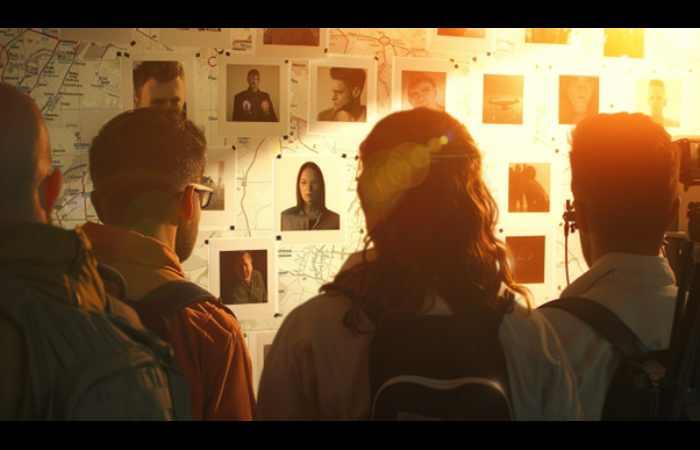Missing persons reports serve as critical lifelines in the search for individuals who have mysteriously vanished. Each year, countless families worldwide face the agony of uncertainty when loved ones disappear without a trace. Statistical data unveils a staggering reality: globally, hundreds of thousands are reported missing annually, painting a picture of a widespread and deeply concerning issue. Beyond the numbers, the disappearance of a person ripples through communities, leaving an indelible mark on the hearts and minds of those left behind. The emotional toll is immeasurable, as families grapple with hope and despair, while society at large confronts the broader implications of safety, security, and human connectivity. This complex web of personal loss and societal impact underscores the profound significance of understanding and addressing missing persons reports.

Table of Contents
The Process of Filing a Missing Person Report
Navigating the maze of procedures to report a loved one missing can be daunting. Understanding the steps involved and the challenges faced during this process is crucial for swift action and resolution.
Initial Steps and Immediate Actions
When someone disappears, time is of the essence. The first step is contacting local law enforcement to file a missing person report immediately—there is no mandatory waiting period. This misconception often delays critical early search efforts. Upon filing, law enforcement agencies spring into action, employing various resources to locate the individual. Immediate actions typically include:
- Gathering Information: Collecting detailed descriptions of the missing person, including physical characteristics, last known location, and any circumstances surrounding their disappearance.
- Broadcasting Alerts: Utilizing media, social networks, and, in the case of children, issuing an Amber Alert to spread the information widely.
- Employing Technology and Resources: Leveraging best free people search databases, surveillance footage, and community tips to trace the person’s last movements.
Criteria and Challenges
Defining someone as missing hinges on legal definitions and specific criteria, which can vary by jurisdiction but generally revolve around the absence from their usual place of residence without a known reason. The challenges in filing a report include:
- Age and Circumstance: Adults have the right to go missing, complicating cases unless there’s evidence of foul play or danger. For minors, the criteria are less stringent, but urgency varies.
- Jurisdictional Issues: The location where the person was last seen versus where they live can confuse which law enforcement agency takes the lead.
- Reporting Delays: Delayed reporting due to misconceptions about waiting periods can hinder search efforts.
The legal framework aims to balance the missing person’s privacy rights with the urgency of finding them, particularly if they are vulnerable or at risk. However, navigating these criteria and overcoming the challenges requires persistence, awareness, and sometimes, the help of community resources and technology, including the best free people search tools available.
Investigation and Search Efforts
Once a missing person report is filed, a multifaceted investigation ensues, incorporating law enforcement expertise, community effort, and the latest technological advancements to increase the chances of locating the missing individual.
Law Enforcement Strategies
The cornerstone of any missing person investigation involves meticulous coordination between various law enforcement agencies. Key strategies include:
- Databases and Inter-agency Collaboration: Sharing information across national and international databases to track missing individuals beyond local jurisdictions.
- Investigative Procedures: Conducting interviews with relatives, friends, and acquaintances to gather crucial information; Organizing search operations in areas the person was last seen or known to frequent; Utilizing forensic analysis to examine personal belongings or potential clues left behind.
These concerted efforts aim at piecing together the missing person’s last known movements and identifying any possible leads.
Community and Public Involvement
Locating a Missing Person: Essential Steps to Begin Your Search heavily relies on community and public involvement. The collective eyes and ears of the public can be invaluable, facilitated through:
- Social Media Campaigns: Amplifying the search across platforms to reach a broader audience.
- Alert Systems: Making use of Amber Alerts for children and Silver Alerts for elderly individuals, broadcasting crucial information quickly.
- Volunteer Searches: Organizing community search parties to cover more ground in the physical search for the missing person.
Public engagement not only extends the reach of search efforts but also fosters a sense of communal responsibility and support for the affected families.
Technology and Innovation
Advancements in technology have revolutionized the search for missing persons, offering tools that were once the realm of science fiction:
- GPS Tracking: Leveraging devices the missing person may have on them, like smartphones or smartwatches, to pinpoint their last known location.
- Drones: Providing aerial views of difficult-to-access areas, drones have become indispensable in search operations, especially in rugged terrains.
- Facial Recognition Technology: Scanning hours of CCTV footage across cities to identify the missing person among crowds or in unexpected locations.
The future of missing persons investigations continues to evolve, with emerging technologies like artificial intelligence and machine learning promising to refine search efforts further, making the process of locating missing individuals faster and more efficient. Through the integration of law enforcement strategies, community involvement, and cutting-edge technology, the journey of finding missing persons is becoming more hopeful, underscoring the importance of every available resource in these critical endeavors.

Challenges in Resolving Missing Persons Cases
The path to resolving missing persons cases is fraught with obstacles, not only in terms of investigative processes but also concerning the legal, societal, and psychological realms.
Legal and Jurisdictional Hurdles
At the heart of many unresolved cases lie complex legal and jurisdictional issues, especially in cross-border situations. These challenges include:
- Cross-Border Cases: The involvement of multiple countries complicates the search efforts due to varying laws, protocols, and the degree of cooperation between nations.
- International Law: Limited by sovereignty, international law often hinders the ability of law enforcement agencies to pursue investigations beyond their borders.
- Legal Procedures Complexity: The intricacies of legal frameworks can delay the investigation process, affecting the timely resolution of cases.
Navigating these hurdles requires meticulous coordination and cooperation between various entities, often under the pressure of time-sensitive circumstances.
Societal and Psychological Impact
The disappearance of a person sends shockwaves through families and communities, leaving a lasting impact:
- Families in Limbo: The uncertainty surrounding a loved one’s whereabouts causes immense emotional distress, often described as a “living grief.”
- Community Tension: High-profile cases can lead to widespread anxiety and fear, affecting the overall sense of security within communities.
- Psychological Toll on Victims and Families: victims, if found, may struggle with trauma and reintegration into society; families face a range of emotions, from hope to despair, impacting their mental health and well-being.
The societal and psychological dimensions of missing persons cases highlight the need for comprehensive support systems, including counseling and community solidarity, to navigate the aftermath of such profound losses. The challenges in resolving these cases underscore the complexities involved, necessitating a multifaceted approach that encompasses legal, investigative, and humanitarian perspectives.
The Role of Non-Profit Organizations and Volunteers
Non-profit organizations and volunteers play a pivotal role in bridging the gaps left by formal search efforts in missing persons cases. These groups offer a range of support services crucial for the families of the missing, providing emotional, logistical, and sometimes financial assistance during times of unimaginable stress. Services include counseling, legal aid, and the organization of community searches, ensuring families are not navigating their ordeal alone.
Volunteers contribute significantly to search and rescue operations, often acting as the backbone of ground searches. They participate in organized searches, distribute flyers, and raise awareness through social media campaigns. Their involvement not only expands the reach and resources available for the search but also brings communities together in support of those affected by the tragedy of a missing loved one. This collaborative effort between non-profit organizations and volunteers exemplifies the power of community and compassion in facing the challenges of finding missing persons.
Conclusion
In the labyrinthine journey to address missing persons cases, the amalgamation of law enforcement precision, community empathy, and technological innovation emerges as a beacon of hope. This article traversed the critical stages from initial reporting to the relentless search and the multifaceted challenges encountered along the way. It underscored the indispensable role of non-profit organizations and volunteers, illuminating the collective endeavor required in these harrowing circumstances. The tapestry of efforts highlights not just the procedural but the deeply human aspect of missing persons cases. Awareness and education stand as the pillars in preempting and effectively resolving such cases, reminding us of the power wielded by knowledge and communal solidarity. In navigating the complex reality of missing persons, the synthesis of awareness, technology, and human compassion paves the way towards not just finding the lost but also healing the wounds left in their wake.

